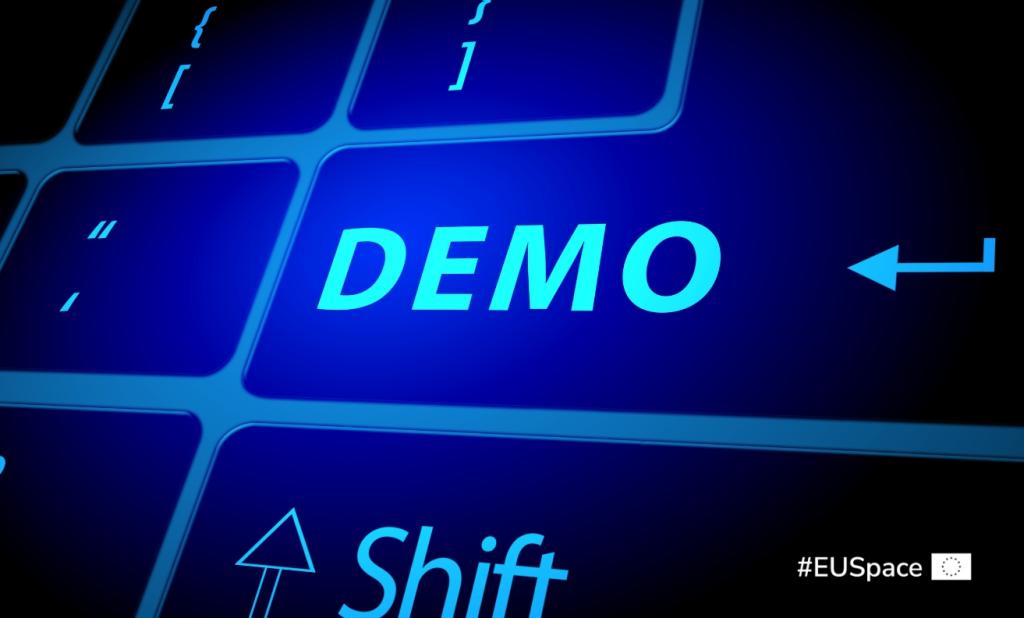Demonstrating the power of EU Space

More than plenaries, panel discussions and keynote addresses, EU Space Week is also a chance to showcase some of the latest innovations that leverage the power of EU Space.
The Demo Day is usually an exciting opportunity for visitors to get a first-hand look at an array of applications using data from Galileo, EGNOS and Copernicus.
This year’s lineup of demos did not disappoint.
Funding innovation
Through such funding mechanisms as Horizon Europe, Fundamental Elements and dedicated calls to Accelerate Adoption in Transport, along with a range of competitions and awards, EUSPA actively supports projects and initiatives developing innovative European products and applications based on the EU Space Programme.
One such project is IWETT.
With the goal of supporting the adoption of EGNOS in the inland waterway transport sector, this project is integrating EGNOS within River Information Services across Europe, including on the Danube River in Hungary, the Spree-Oder Waterway in Germany and the Guadalquivir River in Spain.
Two other EUSPA supported projects featured at EU Space Week were TRENI and DEGREE led by QUASCOM. The former is using data from EGNOS and signals from Galileo and other constellations to develop a GNSS receiver platform capable of providing a robust positioning and navigation solution for railways. QUASCOM, on the other hand, is working on Galileo-enabled GNSS receivers that can be used in drones, trains and space applications.
GEODESY, a EUSPA-funded drone navigation solution based on a Galileo multi-constellation and multi-frequency receiver, leveraging the Galileo OS-NMA and HAS differentiators was also on hand.
Showcasing solutions
Other companies, agencies, organisations and initiatives were in Sevilla to showcase their latest applications. These included e-GEOS, a leading international player in the Earth Observation and geo-spatial information business, who demonstrated an application for generating flood maps based on Copernicus data and services.
Speaking of Copernicus, Mercator Ocean showed off the MyOcean Viewer, an online interactive tool that allows users to view oceanographic data coming from Copernicus and featuring such variables as temperature, salinity and sea level for any region in the world. The organisation, which delivers the Copernicus Marine Service (CMEMS), also brought its immersive virtual reality experience that uses Earth Observation data to help users better understand the interaction between the ocean and the climate.
The European Environment Agency (EEA), the EU’s agency delivering knowledge and data to support Europe's environment and climate goals, showed how the European Ground Motion Service (EGMS) uses Synthetic Aperture Radar Interferometry (InSAR) data derived from Copernicus Sentinel-1 to detect and measure ground movements with millimetre precision.
The Agency also discussed how the pan-European CORINE Land Cover inventory serves a multitude of use cases, including environmental monitoring, land use planning, climate change assessments and emergency management.
Both EEA applications are part of the Copernicus Land Monitoring Service (CLMS).
Other Copernicus-related solutions featured during Demo Day included the Copernicus Health Hub, Copernicus Arctic Hub, Copernicus Energy Hub and Copernicus Coastal Hub.
A BIG impact
While all these applications created a substantial amount of buzz and excitement, Demo Day was dominated by the MIURA 1. And we don’t mean that figuratively. At a whopping 13 metres tall, it was hard to miss this rocket!
Designed by PLD Space, a European New Space company, the suborbital MIURA 1 launch vehicle is the first space system capable of carrying payloads into space and then bringing them safely back to Earth.
“Regardless of their size, the projects, applications and solutions featured at Demo Day will all have a very big impact on Europe’s space industry and European society,” says da Costa.
Media note: This feature can be republished without charge provided the European Union Agency for the Space Programme (EUSPA) is acknowledged as the source at the top or the bottom of the story. You must request permission before you use any of the photographs on the site. If you republish, we would be grateful if you could link back to the EUSPA website (http://www.euspa.europa.eu).